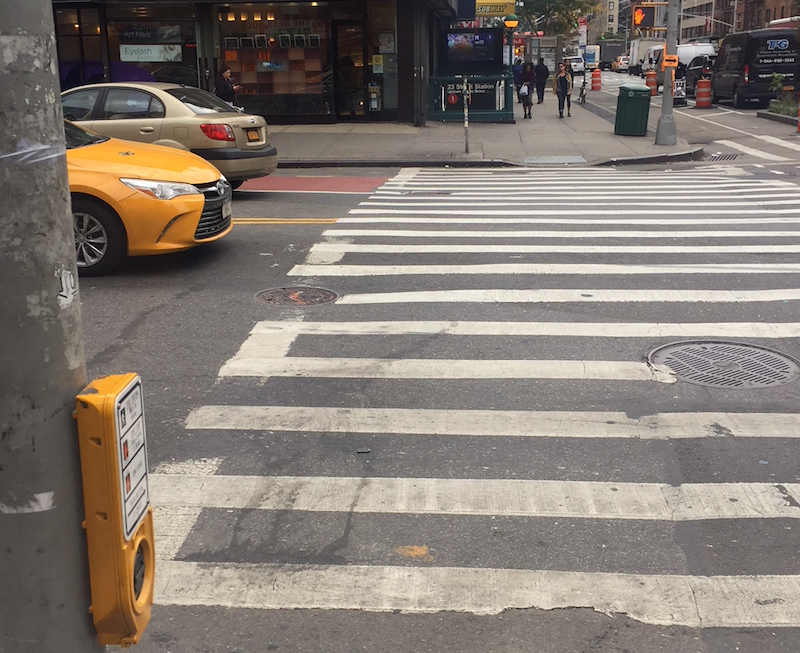Thomas Logan, Equal Entry CEO, recently delivered a presentation at Princeton University about APS technology.
APS stands for Accessible Pedestrian Signal Device. You may have noticed these devices at crosswalks, where they help people who are blind or low-vision know when they can safely cross a street.

The current APS solution is a sign box installed parallel to each crosswalk. The box emits a locator tone so it is discoverable. When pressed, it will say “wait” if the crosswalk sign is not green, and it emits a recognizable sound during the duration the crosswalk is green. However, it does not provide wayfinding guidance. There is no speech announcement of what intersection a person is at. Also, there is no support for low-vision people to more easily read street names.
Price has been a significant limiting factor because the current cost per intersection averages approximately $43,060. For the 78 intersections where APS was installed in New York City, the total cost was $3,358,690.
How could the city build more affordable APS devices with greater accessibility in mind? Logan had an idea. He teamed up with Chuck Groom, a software engineer and serial entrepreneur, to make it happen.
Logan and Groom’s Open Accessible Pedestrian Signals (APS) project is underway, and has been submitted to New York City’s Call for Innovation challenge. Their proposal is based on providing free and open tools for generating the hardware and software assets needed to produce accessible pedestrian signals at a dramatically lower cost than the existing solution, with more features. Under their plan, building 8 APS boxes for a 4-way intersection would cost about $528.
Watch Logan and Groom’s presentation at Princeton: